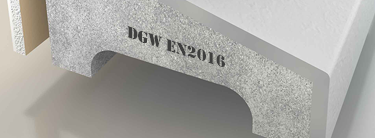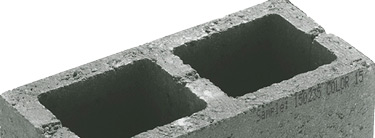Concrete
Properties of concrete
Concrete has an open (porous) structure that allows it to absorb liquids easily. This makes the use of oil-based inks possible. Since concrete is often subject to prolonged moisture and sunlight exposure, it is also important for UV proof inks to be used, mixed with additional pigment or dye(s). This also maintains color fastness and provides more long lasting code adhesion and visibility. Finally, light colored inks (such as yellow or blue) are commonly used in order to create enough contrast with the often darker color of concrete.
Suitable coding techniques for concrete
When concrete is being coded during production, Hi-Res Inkjet is the most common coding method. In addition, In-line Rollcoders are also commonly used for budget reasons (or if the codes do not change very frequently). Prints will then be applied along the production line while the concrete is in motion. If there is no transport option, a traverse can be used. Finally, marking of concrete on e.g. construction sites, can of course also be done manually with Markers, Handcoders or Stencils.



